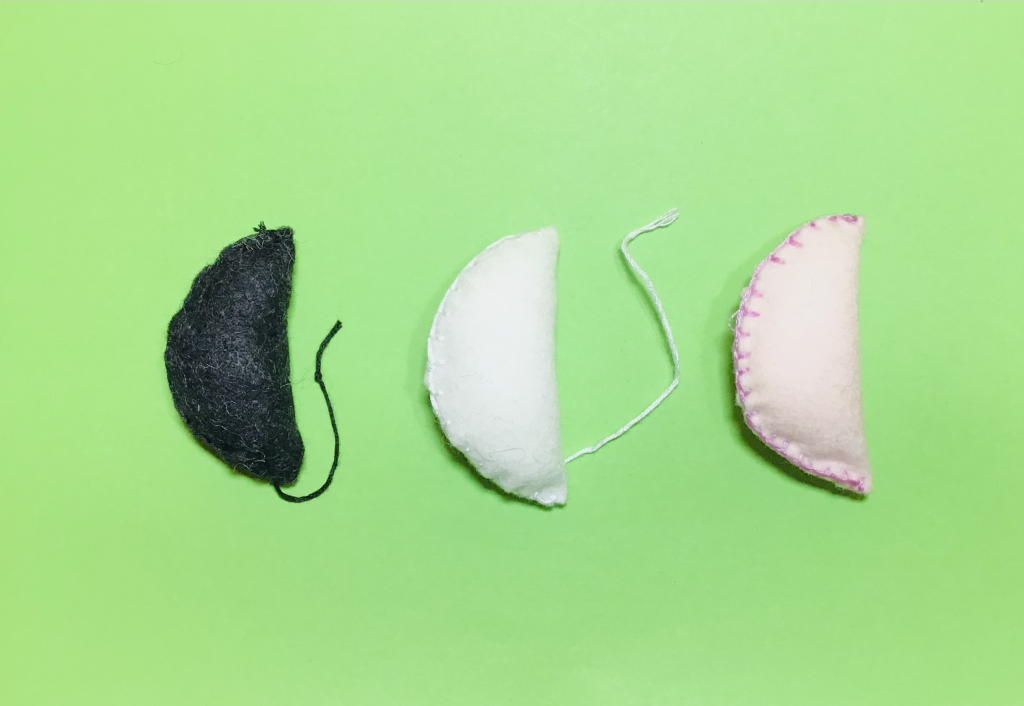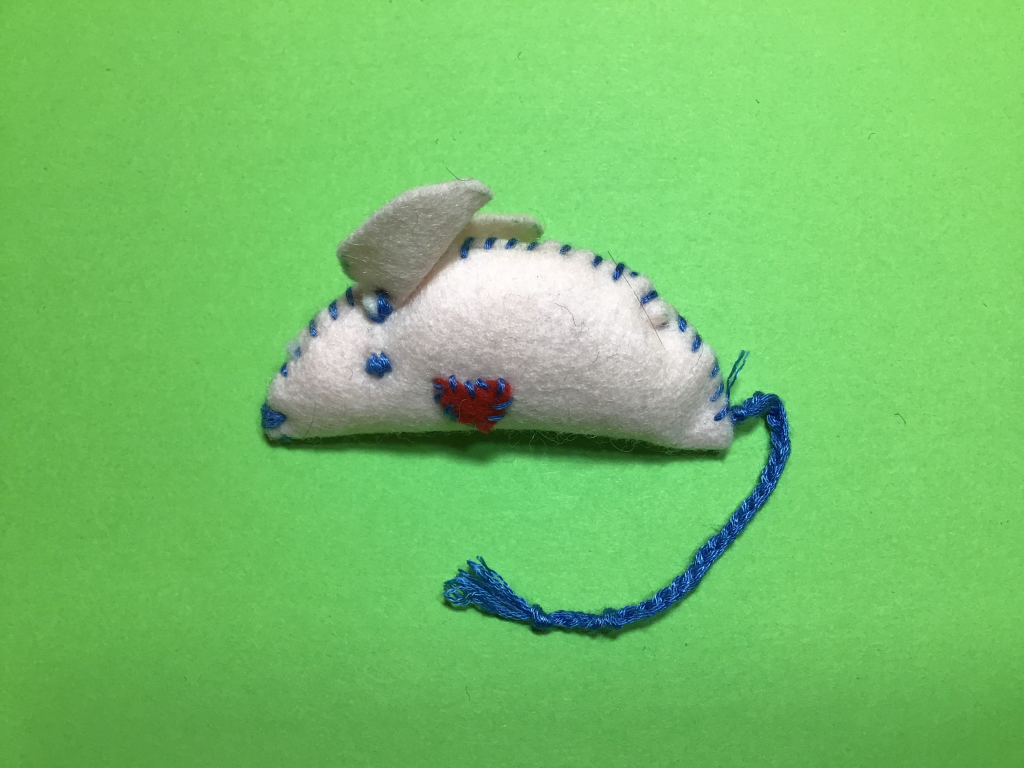The Mouse Exchange is a public engagement activity where we invite small groups of members of the public to “make a mouse” with researchers, using felt, wool and other craft materials. Throughout the 20 or so minutes we spend together participants can explore the origins of laboratory mice through conversation and interaction with objects.

Crafting creates a space that slows down time. With that it enables attention to be brought to what one is doing with your hands and enables un-structured conversations and remarks to be made. A conversation when crafting is necessarily broken by reaching for a pair of scissors, asking how to do something, and yet all the while the making of a research mouse is intimate to the participant’s and facilitator’s hands.

The primary object that all participants will have in their hands and work-on for the duration is a small pink, black or white soft felt stuffed pasty shape. This pasty becomes the mouse body, two smaller circles are sown on to become mouse ears. Then with embroidery thread we invite people to add eyes, nose, whiskers and a tail. Its ear is then clipped (hole-punched) for genotyping (to find out what genes are in this particular mouse), it is then named by its creator.
Other objects we use include a freezer box that acts as our biobank. Biobanks are where frozen mice embryos are stored until needed for implanting into a surrogate mouse mother. It maybe that a participant is invited to ‘resurrect’ a mouse from the biobank, rather than create a completely new mouse strain themselves.
We also encourage participants to complete a mouse passport for the mouse they make. Mouse passports travel with mice and detail their specific care needs which varies from mouse strain to mouse strain. The completed mouse and passport are then left to live in our ‘caging system’ – where rows of different felt mice start to stack up in a hanging shoe-storage rack.
The Mouse Exchange creates a space where participants are invited to relate to laboratory mice in a different way: not as an audience at a distance, but as creators. This shift is made possible by the use of crafting and metaphor, and opens up conversations where participants can investigate what is involved in making mice for research, and discuss the complexities of creating and caring for them, rather than a sole focus on the nature of laboratory experiments.
The Mouse Exchange is therefore a curiosity-driven activity that creates a space for participants to relate to laboratory mice differently. Across a number of events, it has inspired excitement and intrigue, as well as intimate and reflective conversations on the subject of animal research.

0 Comments